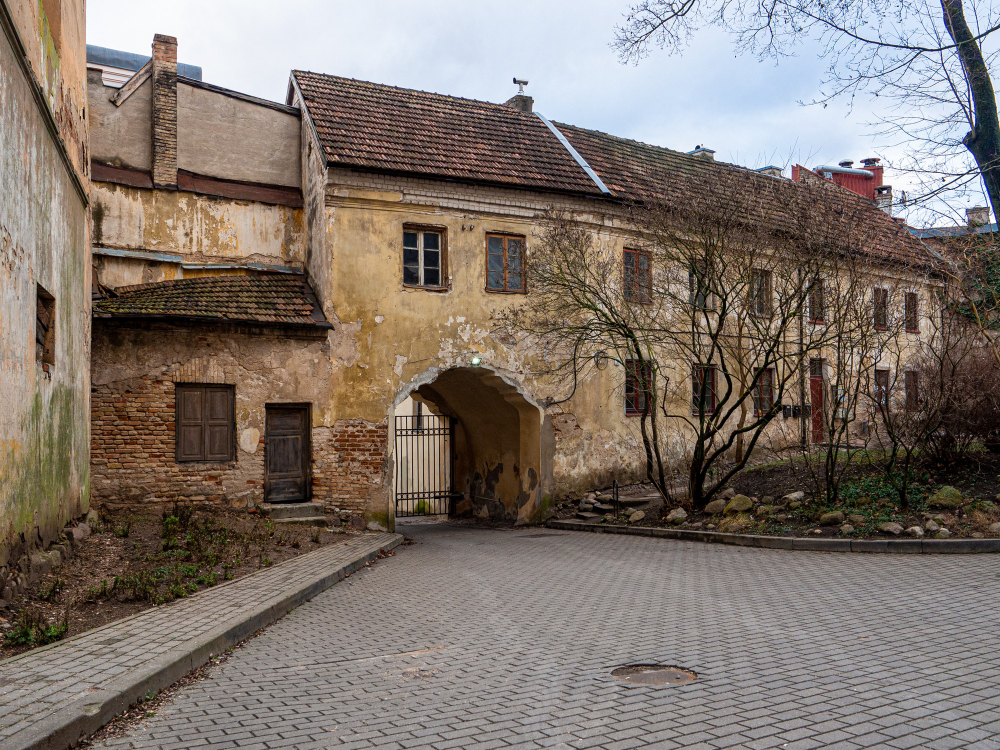Poland’s “collapsing towns” that got left behind
By Marek Szymaniak (tekst dostępny również w wersji polskiej)
I am a child of a collapsing town.
Once thriving centres of local industry, small Polish towns became overlooked victims of the rapid changes introduced after the fall of communism in 1989.
These places lived and died with local state-owned enterprises, which in the 1990s, in many cases, found themselves in the hands of managers who found it difficult to adapt the companies to the free market reality, often opting for the simpler solution of selling them for parts.
As the factories began to collapse one by one, residents of the towns found themselves without jobs and later even without some vital public services.
I, like many others, left my hometown. And, like many others, I did not go back. Millions stayed, however. And, despite promises to level the playing field, the depopulation of these areas continues.
The term “collapsing towns” (miasta zapaści) refers to the more than half of Poland’s 255 towns and cities classified by researchers at the Polish Academy of Sciences – using indicators including population size, unemployment, registered businesses and municipal budget revenues – as being threatened by marginalisation and loss of their economic and social functions.
These are places ranging in size from 15,000 to 100,000 inhabitants, spread throughout Poland. They share the same problems: depopulation, systemic unemployment and declining industry, housing issues and difficult access to the healthcare and education system.
And the gap between them and the biggest cities is widening to dangerous proportions.
Such problems emerged after the fall of communism, as the transformation to a free-market economy in many smaller settlements took a brutal and drastic course, often bringing about the ruin of local industry.
According to research by economist Andrzej Karpiński, as many as a third of factories closed down or ceased production, often as a result of hasty and misguided decisions on privatisation.
In Prudnik, a town of 20,000 in the Opole region, the post-communist transformation killed off Frotex, a fabric producer employing 3,000 people that had survived two wars and communism.
In the face of an influx of cheap products from China and spiralling inflation that reached several dozen percent per month, the Frotex factory began struggling to find customers for its flagship product, towels.
Despite a series of layoffs, the company managed to stay afloat for several more years, even turning a profit in some. The company was eventually sold in 2002 to private investors for three times less than the price offered by the plant’s employees.
The new investors, however, paid in cash, while the employees wanted to pay by having a share of their salaries’ deducted until the necessary amount was collected.
The new owner decided that the company would import cotton products from India and China and then sell them under its own brand. This strategy did not work and the company finally closed down in 2010, leaving a Frotex-shaped hole in the local economy.
Such closures were not only catastrophic in themselves, but also had a domino effect: when factory workers lost their jobs, other local businesses also suffered. This led to a spike in unemployment in many parts of Poland.
When Poland joined the European Union, unemployment in Kętrzyn, a town of 27,000 in northeast Poland, was 35% – compared to a national average of 19%. Worse still, this situation lingered for years. A decade later, when national unemployment was 11.4%, in Kętrzyn it was still over 30%.
“Kętrzyn was a big, dynamic industrial centre,” recalls Tomasz, a 47-year-old Polish teacher still living in town. “Nowadays there’s practically nothing left of it.”
The sugar mill? Gone. The dairy? Even earlier. The same story with the brewery, yeast factory, coffee roasting plant, mill, the Kętrzyn construction company, Christmas decoration factory, and Polam-Farel, a producer of air heaters known throughout Poland.
And recently the biggest Kętrzyn legend – the Warmia clothes factory, which sewed the uniforms for the Polish team at the Calgary Winter Olympics – also closed.
“All that remains of most of them is rubble and ruins,” Tomasz says. “The authorities allowed the factories to go bust, without worrying too much about how to fill the gaps. Some claim that the residents can’t cope in the new, free-market reality. I think they’ve coped brilliantly, because it’s no easy task to survive in these conditions.”
In these circumstances, some people resorted to working in the grey economy. Others went abroad to work or migrated to larger cities, where more employment and stability were on offer. In the towns of Kamienna Góra and Nowa Ruda, almost a fifth of residents have left.
It is not a process that has ended either. According to forecasts, almost half of “collapsing towns” will lose more than a tenth of their residents by 2030. Only three – Ełk, Bytów and Pułtusk – are set to grow.
As well as depopulating, collapsing towns are also ageing rapidly. In some, soon a third of residents will be retired.
Though it may at first seem paradoxical, as well as suffering declining populations, collapsing towns also face a housing crisis.
It is mostly young people who leave, while the parents and/or grandparents whom they lived with are likely to remain in their current homes for decades to come.
In cities, construction is taking place on a massive scale (though still not fast enough to meet demand propelled by migration). But in small towns there is none, or very little, leaving remaining residents without housing that meets the needs of a modern household.
In Jasło, a town of 36,000 in Podkarpackie, data from Statistics Poland (GUS), a state agency, for 2019 show that only 26 new apartments were completed there – just 0.7 per 1,000 residents. In 2018 there were 29, and a year later, 32.
By contrast, in the provincial capital of Rzeszów, 3,291 homes were completed in 2019 – 16.9 per 1,000 residents. And the figure for Warsaw was 12.1 per 1,000 residents.
Meanwhile, the institutions that once held together local communities are also dying out. In the past, many employees could count on a nursery or preschool at their workplace, medical care, subsidised canteen meals, organised entertainment in the cultural centre, and subsidised summer holidays and camps for their children.
So, when factories closed down, workers lost not only their jobs, but all the added extras too. It also meant that local authorities had less income, leading to cuts across the board. This included budgets for cinemas, cultural centres, and libraries, meaning dwindling entertainment and leisure opportunities.
This particularly affects young people, who have nothing else to do but roam around the town, occupying benches or bus stops where no buses stop any more. Moving from spot to spot, they dream – as in the song “Chłopcy” (Boys) by the band Myslovitz (named after the city of Mysłowice, population 72,000) – of “life in distant lands” and finding better places to live.
Of course, it is not just these problems that make the vicious circle of depopulation spin ever faster. There’s the inferior education, which makes it hard to get a start in life and takes opportunities away, deepening inequalities. And there’s the worsening access to healthcare, and so on and so forth.
Every small town, of course, experiences these problems differently. In some, I even managed to find examples of positive solutions and ideas that could provide an example of how to deal with such difficulties. Towns such as Pleszew and Chorzów have, in the remote work era, managed to both attract new residents and retain old ones.
Data from the latest national census show that, between 2011 and 2022, some Poles left cities and the population in rural areas grew, mainly thanks to the development of suburban settlements around large cities.
But systematic, well-planned and apolitical solutions are essential. Without them, the collapse, especially of those towns without a big city in the vicinity, will only get worse.
The governing Law and Justice (PiS) party, upon coming to power in 2015, declared that it was aware of the problems of small towns, in contrast to its predecessor, Civic Platform (PO), which was focused on the development of big cities.
But progress has been lacking. Despite a promise to fight, for example, transport exclusion – and the creation of a special bus development fund – the total length of local bus routes in Poland outside major cities in Poland fell by almost 45% between 2016 and 2022.
In this reality, it is still hard to plan a future in a small town.
“In a small town there’s always the problem: stay or leave,” says Maciek, a young resident of Prudnik. “If you stay, you regret not leaving, and wonder what might have been. If you leave, you’re far from your family and never quite at home. You can’t put down roots. People aren’t trees – you can replant them, but not in just any soil.”

